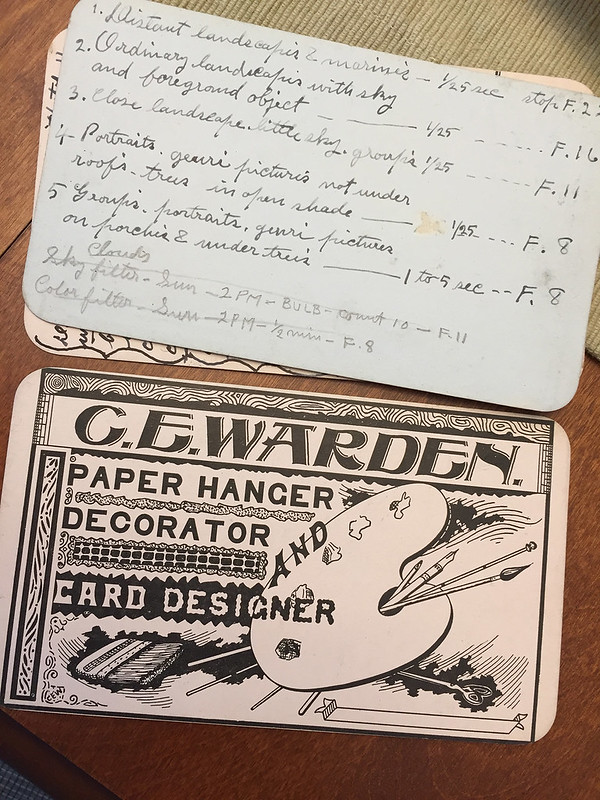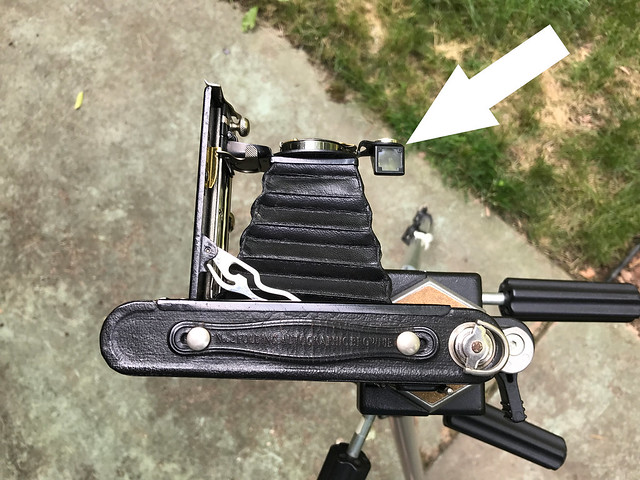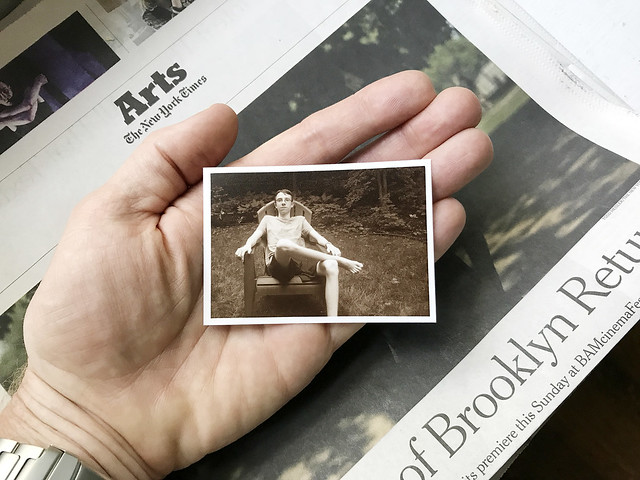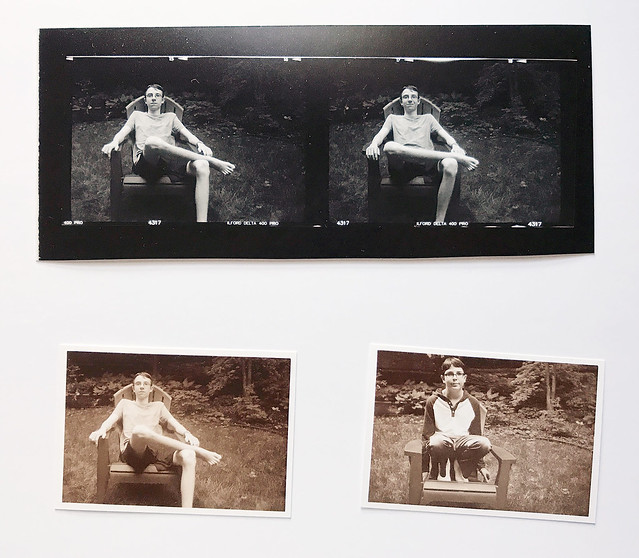A few months back my dad called and said that he had two old cameras that he wanted to pass on to me. I thought maybe they were film cameras from the 1980s or something. (He knows I like using old film cameras and making prints in the darkroom.)
But they weren’t from the 1980s. These Kodak cameras belonged to my dad’s great uncle Clyde, and were made in 1915. And obviously Clyde took care of his things.
 Untitled
Untitled by
Jeff Warden, on Flickr
My dad knew him but only at the end of Clyde’s life and so doesn’t have a lot of personal details about him. My family history from that time speaks mainly to births and deaths and while I have no birth date I know Clyde Endymion Warden died in 1948 in Newark Ohio, when my dad was six years old.
I do know that Clyde was a talented designer and artist, as there are scores of oil paintings and drawings on the walls of my relatives’ homes. The painting in one of these pictures was made by Clyde between 1910 and 1920.
In the beautifully preserved camera boxes are all the instructions, accessories, and Clyde’s business cards too, which are filled with exposure notes in his own hand on the reverse.
 Untitled
Untitled by
Jeff Warden, on Flickr
102 years later Kodak still makes films for one of the cameras, in color and black-and-white too. So of course I’ve been fiddling with the camera, taking pictures here and there and developing the film in my basement. (My dad told me he used these cameras when he was a kid, in his own basement darkroom.) I’m happy to report that the Brownie works perfectly. I don’t think my iPhoneCam-puter will still be working in just five years, much less in a hundred, so kudos to Kodak for making these cameras of enduring quality and the film to run through them as well.
Now that's a tiny viewfinder.
 Untitled
Untitled by
Jeff Warden, on Flickr
My kids are fascinated with these antiques. Owen (15) is studying history and wondered if this type of camera would have been used during WW1. Why yes, they were. In fact Kodak founded the United States School of Aerial Photography at Kodak Park in Rochester, New York in 1918, and trained 2100 war photographers with similar equipment.
I’ve learned that back in the day a popular way to use these cameras was to make contact prints, which means simply shining light directly through the negative while it's on top of and contacting the photographic paper beneath. This would produce a handy, small snapshot of an appropriate size for family albums. So that’s how I’m going to use it. I love it.
 Untitled
Untitled by
Jeff Warden, on Flickr
I'm toning the little pictures with sepia sulfide, also commonly used in that time to preserve silver gelatin prints such as these. The chemists of the time couldn’t have known they were making an eventual sepia Instagram filter. :-)
Before and after sepia sulfide toning:
 Untitled
Untitled by
Jeff Warden, on Flickr
The little prints are tucked into the frame at the lower left. Clyde made the painting when that Brownie was still new.
 Untitled
Untitled by
Jeff Warden, on Flickr
Thanks, Dad.